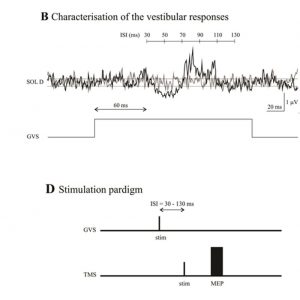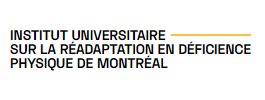Assessment of vestibulocortical interactions during standing in healthy subjects

The vestibular system is essential to produce adequate postural responses enabling voluntary movement. However, it is still unknown how exactly the vestibular system influences corticospinal output during postural tasks. Here, we examined the modulation exerted by the vestibular system on corticospinal output to lower limb muscles during standing. Healthy subjects maintained quiet standing, head facing forward with eyes closed. Galvanic vestibular stimulation (GVS) was applied bipolarly (having two opposite poles) and binaurally (applied behind the two ears) at different delays prior to transcranial magnetic stimulation (TMS) which triggered motor evoked potentials (MEPs). With the cathode right/anode left configuration, MEPs in right Soleus (SOL) muscle were significantly suppressed when GVS was applied at interstimulus interval (ISI) = 40 and 130 ms before TMS. With the anode right/cathode left configuration, no significant changes were observed. The data indicate that vestibular signals modulate corticospinal output to SOL during standing.





